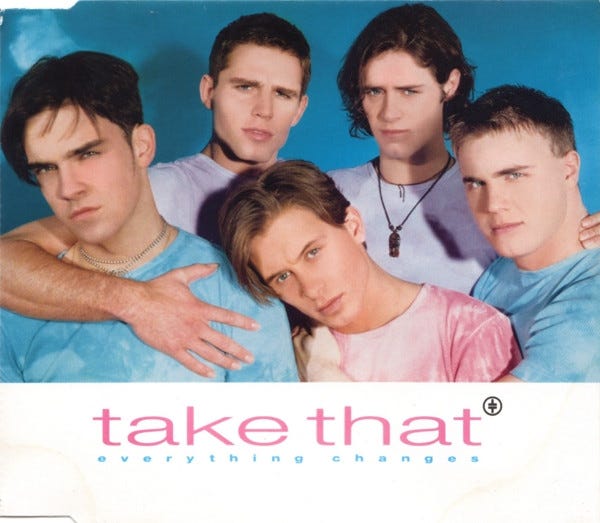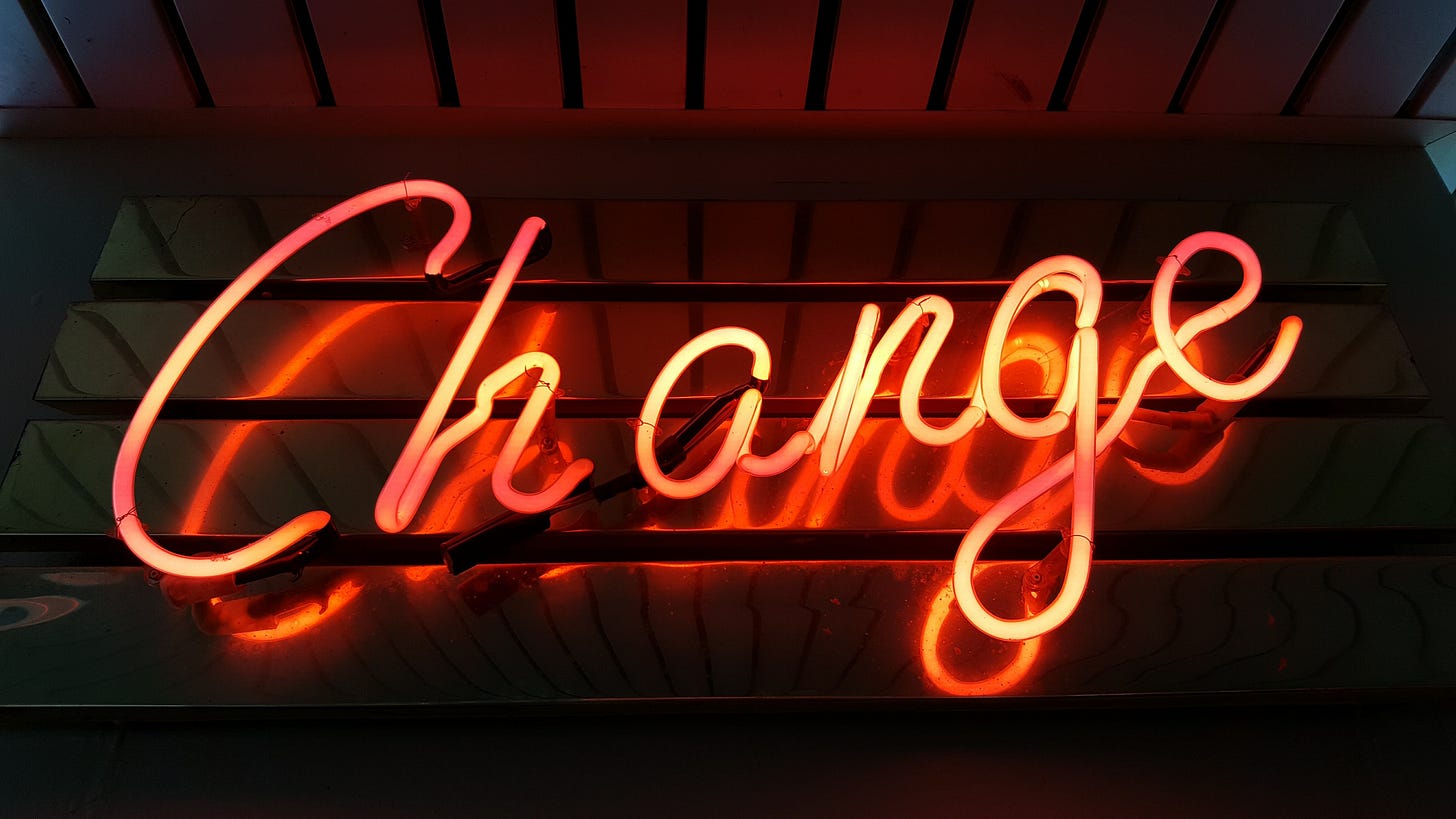Everything changes but you (and your habits)
Don't believe the "platforms are constantly changing"-hype. Our habits make our news and media consumption significantly sticky
When people like me tell you that "the online landscape is constantly changing and evolving", the word "constantly" is doing a lot of hard work. On a surface level, it certainly feels true. Trends and stories burn brightly but disappear quickly - immediately replaced by our insatiable desire for "the new".
However, on a deeper, more structural level, constant change happens much more slowly. "Evolution" is closer to the point. The online landscape has been relatively static when you look at crucial stats like user numbers and time spent on services.
TikTok is the only genuinely new platform of the past five (or even ten) years. We get very frothy about micro-trends (Clubhouse! Threads! The death of Twitter!), but the macro trends move much more slowly. These are, to quote BBH, the charts that don't change.
The most recent Ofcom news consumption report perfectly illustrates this lack of change in our habits. Looking at the top platforms survey respondents use to access the news, the majority of them have remained static over the past five years.

The slow decline in broadcast reach continues as its audience dies off or grows weary of the endless doom loop of news in the early 2020s. People are slowly but surely moving away from Facebook, generally and as a news source, but Facebook is still the most used social media platform for accessing news. The majority of other sources of news have stable levels of usage. Even Twitter, its infrastructure crumbling as the chaos reigns, remains remarkably sticky for people who like it.
That is the fundamental nature of the changing online landscape - slow evolution, not the churn of constant revolution your newsfeeds would have you believe in.
History tells us that people generally hate change, particularly big, sudden changes we cannot control. Instagram copped major flak last summer when it redesigned to mimic TikTok. The cosmetic change (swiping between videos instead of smooth scrolling) rolled back, but the overall "pivot to algorithmic video" remained, and we've all forgotten about that now. When Facebook redesigned its newsfeed, people hated it. That furore is long-forgotten now. No one likes Twitter's rebrand to X, but based on historical precedence, everyone will moan about the rebrand, post about it for some additional clout, and then quickly forget about the change in a month.
Human beings are creatures of habits, and our habits are incredibly powerful - making them extremely tough to break. So while many Facebook newsfeeds are barren wastelands and many big brands have deserted Twitter, a significant portion of people are still spending their time on both platforms. They may be there by choice, but more likely, they're on those platforms out of habit. Unthinkingly opening their phones and allowing their unconscious muscle memory to guide them down well-trodden pathways.
On Twitter, there's an element of delight taken in this inability to quit the platform. Search "hellsite", and you'll see people bemoaning their Twitter anniversary and lamenting the time spent on the platform. But still, they don't quit.
The platforms we use daily are incredibly sticky because they're so habitual. And as anyone who has tried quitting smoking will tell you, quitting a deeply ingrained habit is hard. One of my most thumbed-through books is Charles Duhigg's The Power of Habit, which I highly recommend if you like pop psychology. Duhigg talks about the cyclical nature of a habit. You have an impulse ("I'm bored"), you take action (open your social media app of choice), and you get a reward (the mild dopamine hit of fresh 'content').
Breaking a habit is problematic because it's hard to ignore the impulse and deny yourself the reward. It takes a lot of willpower to ignore those impulses, and people struggle with the mental energy required to suppress those feelings. Duhigg recommends (and I can attest to its success) replacing the reward in the loop instead of trying to break the habit.
And there are plenty of other options for getting your bitesize content-based dopamine hit (Reddit is my current addiction, alongside my Reverb feed, but that moves too slowly for my brain). But there's something about Twitter that scratches a mental itch in a way that many Twitter replacements don't. And that "something" is also why Twitter remains an essential platform for businesses to track and why we still pay social media monitoring services to access the API.
But what is that something, that special sauce? My view stems from Twitter's symbiotic relationship with the mainstream media cycle and our news consumption. Even as brands and users desert Twitter in droves, journalists remain some of the site's most active users. They're still there, breaking news to each other, sharing their hot takes on the day's topics and sourcing opinions from "real people" (lol) to bulk out their stories. And because the journalists are there, the politicians have (by and large) stuck around - generally in broadcast mode from their official accounts. Still, you know their SpAds and civil servants are lurking in the background to spot the latest trends and breaking news.
Despite all the changes Elon has made and the many failed products the pre-Elon regime tried to ship (Fleets, Spaces, Revue), this core user experience has remained the same. Sure, there are thousands of bad takes, nazis and a million other reasons to hate the platform. But if you put time and effort into filtering and curating your feed, you can just about focus on breaking news, finding genuinely interesting hot takes and perhaps even sourcing a story or two.
Either by accident or design, Twitter hasn't fallen onto the "short-form vertical video designed to please the algorithm"-treadmill that has taken over TikTok, YouTube Shorts, Instagram and Facebook. One crafted text post is still all you need to get some clout on Twitter. On the other platforms, you're going nowhere if you're not up on the latest production values. Although perhaps introducing text posts on TikTok will make a difference and encourage more "text-centric" Twitter users to make the switch.
But no guarantee replacing your Twitter habit with one of the other platforms will generate a more fulfilling reward. As Alexi Gunner writes in his excellent
newsletter, TikTok and Reels are full of "instant, but ultimately nutritionless hits of dopamine" - videos like so-called "sludge content", random Family Guy clips stitched together with ASMR or gaming videos. The latest trend to fit this bill will surely only make hardcore Twitter users retreat to Elon's burning ball of chaos - NPC live streamers, who pretend to be non-playable characters (hence NPC) from video games, reacting robotically every time a viewer sends a monetary gift. TikTok users lap these videos up, even as they feel entirely unfulfilled by watching them.Again, the call of the habit is just too strong. And while it may be simple on paper to replace your dopamine reward with something else, finding something healthy and fulfilling on the current popular services, and even in the news landscape, is a tall order. So we continue reflexively navigating to the same apps, the same websites, the same channels and even the same newspapers, even as we feel significant ennui about the stories we read and the videos we watch.
Plus ça change, plus c'est la même chose - literally, "the more it changes, the more it's the same thing". Don't let consultants like me convince you otherwise.



